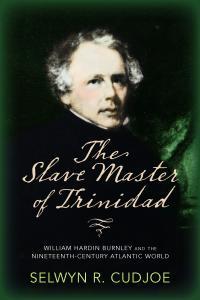National heroes and history
By Dr Selwyn R. Cudjoe
May 24, 2021
A few weeks ago I listened to young Jamaican student Deane Weatherly talk about the importance of Queen Nanny of the Jamaican Maroons to her and Jamaican national life.
Queen Nanny, the leader of one of the country's maroon groups, defeated the British in the 18th century, thereby establishing Nanny Town, a maroon town in the Blue Mountain region.
I read Carey Robinson's The Fighting Maroons of Jamaica which spoke about the accomplishment of these valiant people in their struggle against British slavery. Years later while I was researching Resistance and Caribbean Literature, my first book, I visited Accompong, the historical village in which some Maroons had set up their sites of resistance to view the terrain where they fought and to understand the obstacles they had to overcome to gain their freedom.
Wheaterly noted that Nanny "incorporated many aspects of the various types of Jamaican people, reanimating folk traditions, histories of resistance, and feminist genealogies... Despite stories of her warrior capabilities, the most representations of Nanny reinterpret her as the caring mother figure of the Maroons rather than as their fierce ruler".
As I listened to the pride this young woman took in Nanny's achievements, I remembered the astonishment that I took in finding a young boy of about 13 years old who was researching Marcus Garvey's life in an old dilapidated library in rural Jamaica several years later. These encounters alerted me to how much Jamaican history interested and inspired its young people.
Although Trinidad and Tobago does not have as deep a fount of historical knowledge as Jamaica, there is much in our history that we can be proud of and which we can use to inspire our young people. In this regard, we can draw much inspiration from the daring of our women during the 1849 rebellion against the British in front of Government House, Port of Spain.
During the latter part of 1849, the government specified that all who were imprisoned for a debt of under $50 would have their heads shaven, made to wear the felon's dress (coarse, osnaburg canvas suits with black caps) and do the menial work of the prison.
The governmental authorities may have gotten away with these atrocities except that they did not reckon with the women's response to the shaving of their hair. They did not recognise the pride that black women take in their hair and how integrally related it is to their sense of self. However, on October 1, one-twelfth of the population (that is, 5,000 of 60,000 people) surrounded Government House while the government was meeting, and demanded the regulations be withdrawn.
Warner, the attorney general, assured the population the offending piece of legislation would be deleted, but the damage had been done. By the end of the evening, the government building was on fire.
The rebellion was led mostly by the women. Felicite, one of female leaders, led her woman warriors with a baton in her hand. One police officer recalled: "I watched Filicite that day. I spoke to her, but to no avail. I said to her, 'It's a shame that a woman so lately married to a respectable man should behave in such a manner.'"
John MacWilliams, a marina, saw Felicite going up the street near the grass market. He testified: "Felicite had a flower in her hair. He asked her: 'How are things going?' She answered: 'Things are not finished yet. We have not yet got the victory. If it don't happen we are going to put fire directly.'"
Another policeman, Williams Gittens, testified that Felicite said with great passion: "Mettez du feu," meaning they would resort to the use of fire if they did not achieve their objective. Felicite believed that all men were cowards."
A week later, Lord Harris realised the error of his ways. He wrote to Lord Grey, the secretary of state: "I will here mention with regard to what has been called shaving, that a rule adopted about two years ago which required that the hair of the prisoners should be kept short, as in the case universal in England, but it appears that this was considered a great punishment, more particularly, by women."
Such examples of resistance tend to give people a better understanding of themselves. Somehow these examples of heroism never reached our young people. But a country that neglects its history is a country without memory. It suffers from a sense of national pride.
In Dreams from my Father, Barack Obama related an important lesson he learned from Asante Moran, the leader of a mentorship programme in the Chicago public schools. He told Obama: "The first thing you have to realise is that the public school system is not about educating black children. Never has been. Inner-schools are about social control. Period. They're operated as holding pens—miniature jails...
"Just think about what a real education for these children would involve. It would start by giving a child an understanding of himself, his world, his culture, his community. That's the starting point of any educational process. That's what makes a child hungry to learn—the promise of being part of something, of mastering his environment."
The British described Queen Nanny as an obeah woman; Felicite was a fishmonger by trade. However, both of them had the welfare of their community at heart. While the former is honoured, the latter has been allowed to smoulder in the dust, few of us knowing anything about her life.
We should educate our children about Felicite and the other women warriors who participated in the 1849 rebellion. True education begins when we allow our students to fall in love with the glorious deeds of their ancestors.
Prof. Cudjoe's email address is scudjoe@wellesley.edu. He can be reached @ProfessorCudjoe.
Share your views here...

The Slave Master of Trinidad by Dr. Selwyn R. Cudjoe
|

